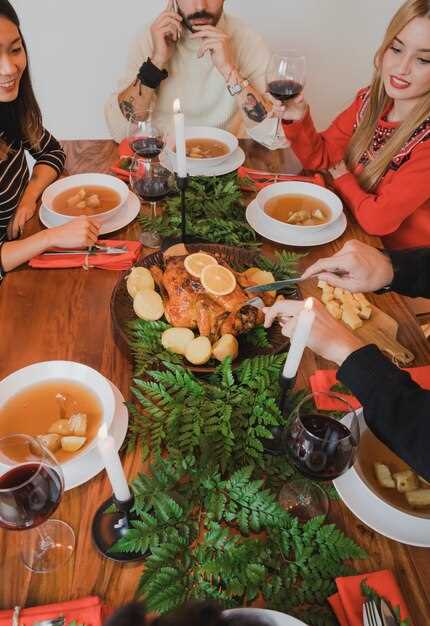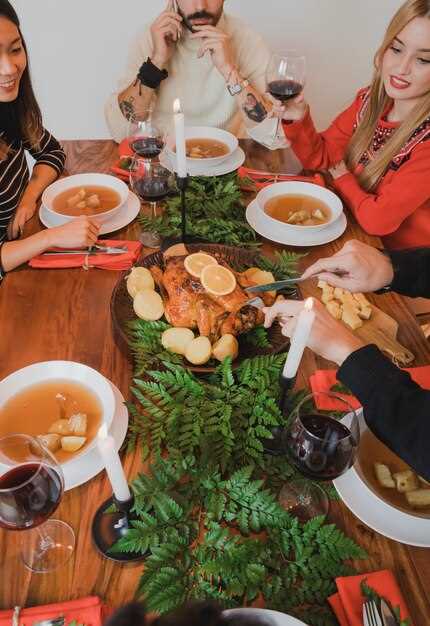Choose a theme that captures the imagination and excitement of your patrons. Whether you’re inspired by the rich spices of Indian cuisine or the elegant simplicity of French dining, a well-curated theme adds a narrative to your menu, making each meal an experience rather than just a dining option.
Consider your existing client base and local trends when selecting the theme. Seasonal and cultural events provide excellent opportunities for thematic dinners. For instance, a rustic autumn harvest theme could feature pumpkin soup, roasted root vegetables, and warm apple pie, tying into the comfort foods that people crave in fall.
Develop a comprehensive menu that aligns with your chosen theme. Each course should contribute to a cohesive story. If you’ve selected a Mediterranean focus, ensure your dishes feature ingredients such as olives, feta cheese, and pita bread, offering authenticity and enriching the dining experience. Don’t forget the drinks; themed cocktails or regional wines can enhance the ambiance significantly.
Atmosphere is crucial in themed dining. Use décor and music to complement your menu. Dim lighting and soft jazz might enhance a speakeasy theme, creating an inviting and immersive environment. Attention to detail, such as table settings that mirror the period or region, can transform a simple meal into a memorable evening.
Planning and Designing a Themed Dinner

Identify a compelling theme that resonates with your restaurant’s identity. Consider elements like cultural cuisines, famous events, or intriguing stories. This focus will guide your menu development, decor choices, and overall ambiance.
Develop a cohesive menu that aligns with the chosen theme. Incorporate specialty dishes that evoke the essence of the selected theme. Ensure your ingredients are accessible to maintain consistency and quality. Balance the menu with diverse options to cater to different dietary needs.
- Thematic Decor: Utilize decor that effectively conveys your theme. Source authentic props or decorations that transport guests to the environment you aim to create. Consider elements such as tableware, lighting, and color schemes that enhance the experience.
- Entertainment: Integrate live performances or themed music to enrich the dining experience. Think about hiring performers, such as musicians or actors, who can bring added authenticity to the event.
- Promotion Strategy: Use social media and email campaigns for targeted marketing. Share behind-the-scenes content to build anticipation and engage potential customers visually.
Focus on staff training to ensure everyone is knowledgeable about the theme and menu. Encourage them to interact with guests in a manner that supports the overall experience.
Evaluate and iterate based on feedback from guests. After the event, gather insights and make adjustments for future themed dinners. This continuous improvement will ensure memorable experiences and increase customer satisfaction.
Identifying the Target Audience and Their Interests
Focus on analyzing your current customer base to determine who frequents your restaurant. Collect basic demographic data such as age, gender, location, and dining preferences. Surveys and feedback forms can provide valuable insights.
Leverage social media analytics to gather data on audience interests and behaviors. Platforms like Instagram and Facebook offer detailed demographic breakdowns and interest tracking that help you identify prevailing food trends and themes that resonate with your audience.
Collaborate with your staff to gather anecdotes and perceptions based on their interactions with customers. They can offer frontline insights into who visits, what they order, and their overall dining experience preferences.
Review competitor offerings to understand what themes attract similar target segments in your area. Host themed nights or trial events to gauge interest, using reservation data to track which themes draw the highest engagement.
| Action | Purpose |
|---|---|
| Survey Customers | Collect detailed insights on dining preferences and interests. |
| Analyze Social Media | Utilize analytics for understanding interests and trend alignment. |
| Engage Staff | Gather their insights on regular customers and feedback. |
| Monitor Competitors | Identify successful themes and target strategies employed by others. |
| Trial Theme Events | Test audience engagement and refine future themed dinner ideas. |
By adopting a data-driven approach, you can efficiently curate dinner experiences that captivate your audience and enhance their dining journey.
Selecting a Theme that Aligns with Your Restaurant’s Brand
Choose a theme that reflects your restaurant’s core values and unique offerings. For example, if your brand emphasizes sustainability, consider a farm-to-table evening where dishes feature locally sourced ingredients. Engage with your identity by incorporating elements that your patrons associate with your establishment. A seafood restaurant might host a coastal night with ocean-inspired décor and a menu that highlights the freshest seasonal catches.
Consider your target audience’s preferences. Analyze customer demographics and interests to craft a theme that resonates with them. A family-friendly restaurant could successfully organize a “Disney Night,” while a spot with a more adult clientele might explore a “Jazz and Cocktails” evening.
Incorporate storytelling to create an immersive experience. Utilize menu descriptions, table settings, and staff attire to narrate a cohesive story that captivates diners from start to finish. For instance, a Mediterranean restaurant might develop an “Aegean Odyssey” theme, enchanting guests with Grecian decor and a flowing menu journeying through the different islands.
Evaluate your available resources and logistical capabilities. Ensure your theme can be executed without straining the kitchen staff or resources. Themed music nights can enhance the atmosphere and require minimal adjustments, such as arranging for a live band or curated playlist to complement your theme.
Regularly seek feedback from your customers post-event. Their input can guide future theme selection, revealing what captivated them or where improvements can be made. Adapting and evolving your themed nights based on real customer experiences ensures continued engagement and satisfaction.
Designing a Menu that Complements the Theme
Create a menu that aligns seamlessly with your restaurant’s theme by focusing on cohesive elements that reflect your concept. Prioritize the following strategies to enhance the dining experience:
- Choose Ingredients that Reflect the Theme: Incorporate region-specific ingredients or popular local flavors. For an Italian-themed evening, include ingredients like basil, mozzarella, and tomatoes, while a Japanese night could feature seaweed, wasabi, and ginger.
- Select Appropriate Cooking Techniques: Utilize traditional cooking methods that relate to the theme. For example, incorporate grilling for a barbecue theme or steaming and stir-frying for an Asian-inspired event.
- Create Signature Dishes: Design a few standout dishes that embody the theme. Signature items not only reinforce the theme but also offer guests memorable dining moments.
- Design Drinks to Match: Complement the menu with beverages that suit the theme. Offer authentic Italian wines alongside an Italian menu or pair craft beers with a casual American theme.
- Pay Attention to Presentation: Ensure that the plating reflects the theme in visual appeal. Use traditional serving ware or garnish in creative ways to contribute to thematic consistency.
- Keep the Menu Simple and Focused: Avoid overwhelming guests with too many choices. Instead, offer a curated selection that showcases the best elements of your theme.
Incorporating these strategies will create a harmonious dining experience that immerses guests fully in the theme from the first sip to the last bite.
Incorporating Decor and Ambiance to Enhance the Experience
Choose a cohesive theme that aligns with the cuisine and concept of your restaurant. For instance, if your menu highlights Mediterranean dishes, integrate elements such as olive trees, terracotta pots, and rustic wooden tables to evoke a sense of the region.
Lighting plays a pivotal role in setting the mood. Use dimmed, warm lighting for an intimate atmosphere or brighter accents to highlight specific areas such as artwork or a centerpiece.
Consider using music that complements your restaurant’s theme. Soft jazz can enhance a luxury dining experience, while traditional folk music might suit a more rustic, cultural setting.
The arrangement of tables and seating can impact the flow of the restaurant. Opt for different seating options–such as cozy booths, communal tables, or high-top counters–to offer variety and comfort, catering to different group sizes and dining preferences.
Incorporate seasonal decor to keep the environment fresh and engaging. This could involve seasonal flowers, festive decorations, or thematic art installations that reflect current celebrations or cultural events.
A distinctive piece of art or a unique furniture item can serve as a conversation starter and enhance the thematic connection. A mural or a bespoke chandelier can also add to the overall aesthetic appeal.
Remember, every design element should resonate with the overall theme, creating a captivating experience that extends beyond the meal itself and encourages diners to return.
Coordinating Staff Attire and Presentation to Match the Theme
Implement a detailed dress code policy tailored to your event’s theme. For a 1920s Gatsby-inspired evening, provide flapper dresses and dapper suits for your staff, while a tropical luau night calls for floral shirts and leis. Ensure staff attire aligns with decor to maintain consistency.
Conduct training sessions emphasizing thematic engagement. Encourage staff to embody theme-related personas, enhancing customer interaction. For a sci-fi evening, ask servers to engage guests with futuristic greetings or offer themed activity suggestions. This adds depth to the guest experience, making the theme come alive.
Incorporate themed accessories for staff, like headpieces or aprons, to subtly reinforce the theme without overwhelming practicality. These small touches can enhance the atmosphere and provide unique photo opportunities for guests, enriching social media exposure for your event.
Regularly review and refresh the dress code as the seasonal offering changes. This ensures attire remains relevant and exciting, keeping both staff and guests engaged and looking forward to what’s next.
Marketing and Executing Themed Dinner Events

Identify your target audience and craft personalized marketing campaigns to reach them effectively. Utilize social media to create buzz by sharing engaging visuals and sneak peeks of the upcoming themed dinner, tagging influential food bloggers or local influencers to amplify your reach.
- Create a Unique Event Page: Design a dedicated landing page on your website providing all event details, menu highlights, and ticketing information. Ensure the page is visually appealing and easy to navigate.
- Email Campaigns: Leverage your existing customer database to send tailored emails, enticing them with early-bird discounts or exclusive offers for the themed dinner event.
- Collaborative Promotions: Partner with local businesses, such as costume shops or entertainment services, to offer package deals that enhance the theme and attract a broader audience.
- Consistent Branding: Ensure all promotional materials, from flyers to social media posts, maintain consistent branding that aligns with the theme, providing a cohesive message across all platforms.
Focus on immersive execution by paying attention to detail. Decorate the venue to perfectly match the theme and train staff to enhance the experience with themed attire and appropriate language or mannerisms.
- Staging and Decor: Invest in thematic props and decor that transform the dining area. Use lighting and sound effects to enhance the ambiance, providing guests with a full sensory experience.
- Themed Menu Planning: Develop a menu that creatively reflects the theme. Offer limited-time dishes that align with the event concept, ensuring flavors and presentation are immersive.
- Staff Preparedness: Organize staff training sessions focused on enhancing guest interactions. Encourage them to engage with diners, offering insights or anecdotes related to the theme.
- Feedback Mechanism: Post-event, encourage feedback through surveys or social media polls to gain insights and continuously improve the execution of future themed dinners.
Monitor customer response in real-time during the event, allowing for quick adjustments if needed. Enable guests to share their experiences with unique hashtags or photo booths to create shareable moments that extend the reach of your event.
Utilizing Social Media to Create Buzz and Attract Customers
Capitalize on Instagram by posting visually appealing snapshots of your themed dinners, using relevant hashtags to reach a broader audience. Engage with customers by encouraging them to share their dining experiences with a specific hashtag, creating a sense of community. Offer special promotions to followers who engage with your posts, driving both online interaction and in-person visits.
Leverage Facebook events to announce upcoming themed dinners. Create engaging content by posting behind-the-scenes footage of your chef preparing exclusive dishes. Encourage followers to RSVP and share the event, which helps in building anticipation and increasing your event’s reach organically.
Use TikTok to create short, creative videos showcasing your restaurant’s ambiance and unique dinner themes. Jump on trending sounds or challenges but tailor them to fit your restaurant’s style. Collaborate with influencers in the food niche to gain visibility among potential customers who value authentic experiences.
Don’t overlook Twitter for quick updates and interactions. Announce last-minute menu additions or limited-time offers, tempting followers with timely, exciting options. Actively engage in conversations with customers by responding to their tweets and addressing any questions or feedback.
Regular stories on Instagram and Facebook offer a perfect avenue for showcasing the dynamic atmosphere during your themed nights. Conduct polls or quizzes related to upcoming events to increase engagement and gather customer preferences, tailoring future events to their interests.
Partnering with Local Influencers for Wider Reach
Identify key influencers within your community who resonate with your brand’s values. Look for food bloggers, Instagram personalities, and local celebrities who have an engaged following. Offer them exclusive dining experiences and encourage them to share their authentic opinions with their audience.
Provide influencers with unique incentives, such as the opportunity to create a custom-themed dinner menu that reflects their personal taste. This collaboration not only enhances their interest in your restaurant but also generates buzz among their followers. Use a mix of platforms like Instagram, TikTok, and YouTube to amplify your reach and engage with a more diverse audience.
| Step | Action | Purpose |
|---|---|---|
| 1 | Research Influencers | Find individuals with an audience relevant to your restaurant’s theme. |
| 2 | Reach Out | Contact influencers with a proposal for collaboration. |
| 3 | Create Unique Experiences | Invite them to exclusive themed dinners to build genuine connections. |
| 4 | Leverage Content | Utilize influencer posts to enhance your restaurant’s visibility. |
Track the results of your partnerships by analyzing social media engagement and any increase in restaurant visits from new patrons. Encourage influencers to provide feedback on the collaboration and use these insights to refine future strategies. By prioritizing genuine relationships, your restaurant can cultivate a community-driven brand presence with far-reaching impact.
Implementing Booking Systems for Smooth Customer Experience
Consider using a reliable online reservation platform to streamline table bookings. These systems not only help manage seating but also reduce wait times, enhancing customer satisfaction. Ensure your chosen platform integrates with your existing systems and social media channels to reach a broader audience.
Prioritize real-time updates. Allow customers to see current availability and receive instant confirmation. Implementing a user-friendly interface is key, ensuring a seamless booking process on both mobile and desktop devices. An intuitive design encourages users to complete their reservations confidently and quickly.
Utilize automated reminders to decrease no-show rates. Send confirmations and reminders via email or SMS to keep your guests informed and remind them of their upcoming reservations. Personalized messages can also include special offers or menu highlights, adding a marketing touch.
Leverage data analytics provided by booking systems to gain insights into customer preferences and peak times. This information can inform staffing decisions and promotional campaigns. Analytics can also help identify patterns, such as frequent cancellations, allowing you to adjust strategies accordingly.
Maintain flexibility in your booking policies. Allow customers to make special requests and adjustments to their reservations as needed. This adaptability not only increases customer satisfaction but also aids in accommodating last-minute changes without hassle.
Offer rewards or loyalty points for bookings made through your system to encourage repeat visits. This strategy can enhance your customer retention efforts and provide additional incentives for direct bookings, reducing reliance on third-party platforms.
By implementing these tactics, your restaurant can provide a smoother, more enjoyable booking experience, ultimately driving higher customer satisfaction and operational efficiency.
Video:
How Chefs Create a Restaurant Menu That Works
How Chefs Create a Restaurant Menu That Works
Q&A:
How can I choose a theme that will appeal to a wide audience for my restaurant’s dinner events?
Selecting a theme that has broad appeal often involves considering popular culture, local interests, and current trends. Begin by researching your target demographic to understand their preferences. You could choose a theme based on popular movies, TV shows, or even eras such as the 80s or 90s, which often attract different age groups. Additionally, consider seasonal themes or those aligned with holidays, as they can boost engagement due to their timely relevance.
What are some cost-effective ways to decorate my restaurant for a themed dinner?
To keep costs low while transforming your restaurant for a themed dinner, reuse available resources and get creative with DIY projects. Utilize items you already have by adapting them to fit the theme—string lights can create a cozy atmosphere, for example. Thrift stores and second-hand shops can be goldmines for inexpensive decorations. Additionally, consider using digital decorations, such as projections or screensavers that fit your theme, which can be more cost-effective than physical items.
Can a themed dinner work for all types of cuisines?
While themed dinners can be designed around any cuisine, it’s essential to ensure the theme complements the food style. For instance, if you operate an Italian restaurant, a Mediterranean theme might enhance the experience, featuring elements like coastal decor and Mediterranean music. However, be cautious with themes that might overshadow or contradict the culinary essence of your restaurant. Authenticity in food presentation, alongside thematic embellishments, is key to creating a cohesive dining experience.
How do I promote my themed dinner events effectively?
Promotion is crucial to the success of themed dinner events. Utilize social media platforms by creating engaging posts and stories that highlight what guests can expect. Consider collaborating with local influencers or bloggers who can share their experiences. Additionally, email marketing campaigns targeting your loyal customers can inform them of upcoming events. Don’t forget the power of word-of-mouth; encourage patrons to invite friends by offering group discounts or special offers.
What role does staff play in enhancing the themed dinner experience?
Your staff can significantly enhance the themed dinner experience by embodying the theme themselves. Encourage them to dress in costumes appropriate to the theme and be knowledgeable about the theme’s significance. Staff can also participate in thematic roles or performances to entertain guests. Training sessions on engaging with customers in ways that align with the theme can make the evening memorable and immersive, encouraging patrons to return for future events.
How can I create a memorable themed dinner experience that stands out from other restaurants?
To create a memorable themed dinner experience, start by conducting thorough research on popular themes that resonate well with your target audience. Consider elements such as cultural events, movie nights, or seasonal festivities. Pay attention to the details: decorate your space to reflect the chosen theme, design a special menu that ties into the theme with unique dishes and drinks, and have your staff dress in themed attire. Additionally, incorporating interactive elements like themed music, live performances, or even games can further enhance the experience for your diners and make it truly unforgettable. Gathering feedback from previous themed events can also lead to further refinement and success.

